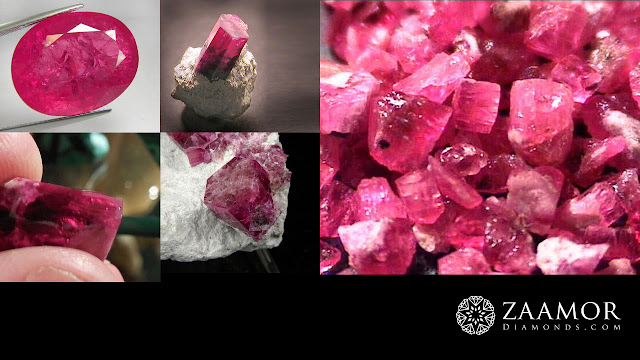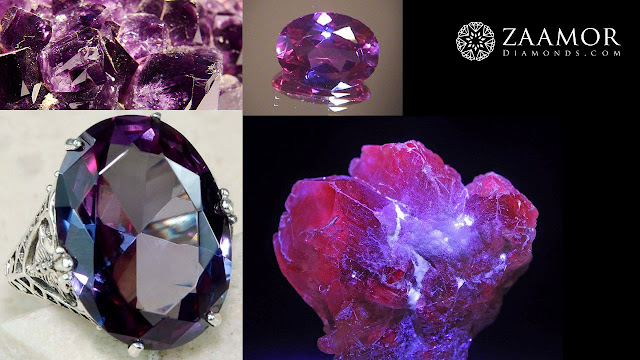Diamonds are one of the most valuable precious stones around, but not because diamonds are especially rare. In fact, high-quality emeral...
Diamonds are one of the most valuable precious stones around, but not because diamonds are especially rare. In fact, high-quality emeralds, rubies, and sapphires are all rarer in nature than diamonds.
Many people know that diamond is actually pretty common when it comes to gemstones but who among us can actually name any that are rarer? Here, we present to you a collection of five of the rarest gemstones on Earth.
Bixbite
Bixbite, also known as RedBaryl. Red beryl (aka bixbite, "red emerald," or "scarlet emerald") was first described in 1904, and while it is closely related on a chemical level to both emerald and aquamarine, it is considerably rarer than both. The mineral's red color is due to the presence of Mn3+ ions.
Musgravite
This mineral was first discovered in 1967 at the Musgrave Range in South Australia, but has shown up in limited quantities in Greenland, Madagascar, and Antarctica. The very first specimen that was actually large and pure enough to be cut to shape wasn't reported until 1993, and, as of 2005, only eight such specimens are believed to exist.
Painite
Painite is a deep, orange-red or brownish red stone that was found in Mynamar in the 1950s. In 2005, The Guinness Book of World Records called painite the world's rarest gemstone mineral. First discovered in Myanmar by British mineralogist Arthur C. D. Pain in the 1950s, for decades there were only two known crystals of the hexagonal mineral on Earth; by 2005, there were still fewer than 25 known specimens.
Alexandrite
Alexandrite is renowned for its strange optical properties – it can actually undergo dramatic shifts in color depending on what kind of light it's in. To be clear: this color change is independent of your viewing angle; a gemstone that shifts colors when you rotate it in your hand is said to be pleochroic, and while alexandrite is strongly pleochroic, it can also change colors independently of viewing angle when viewed under an artificial light source. In natural sunlight, the gem appears greenish blue; in soft incandescent light, the gem appears reddish purple, instead.
A variety of Chrysoberyl, alexandrite belongs to the same family of gemstones as emerald. Its color-changing properties (and its scarcity relative to diamond) are due to an exceedingly rare combination of minerals that includes titanium, iron and chromium.
Grandidierite
This bluish-green mineral is found almost exclusively in Madagascar, though the first (and, presumably, only) clean faceted specimen (described here) was recovered from Sri Lanka. Like alexandrite and tanzinite, grandidierite is pleochroic, and can transmit blue, green, and white light.
Grandidierite is a rare gem that ranges from blue-green to green and can have a translucent or pearly appearance. Translucent samples that can be faceted are rare and highly sought after for their ability to change colors from nearly colorless to dark green when viewed from different angles.
When buying or selling rare gems such as these, or a diamond for that matter, it is very important to have proper documentation showing the quality and appraised value of the stone.











